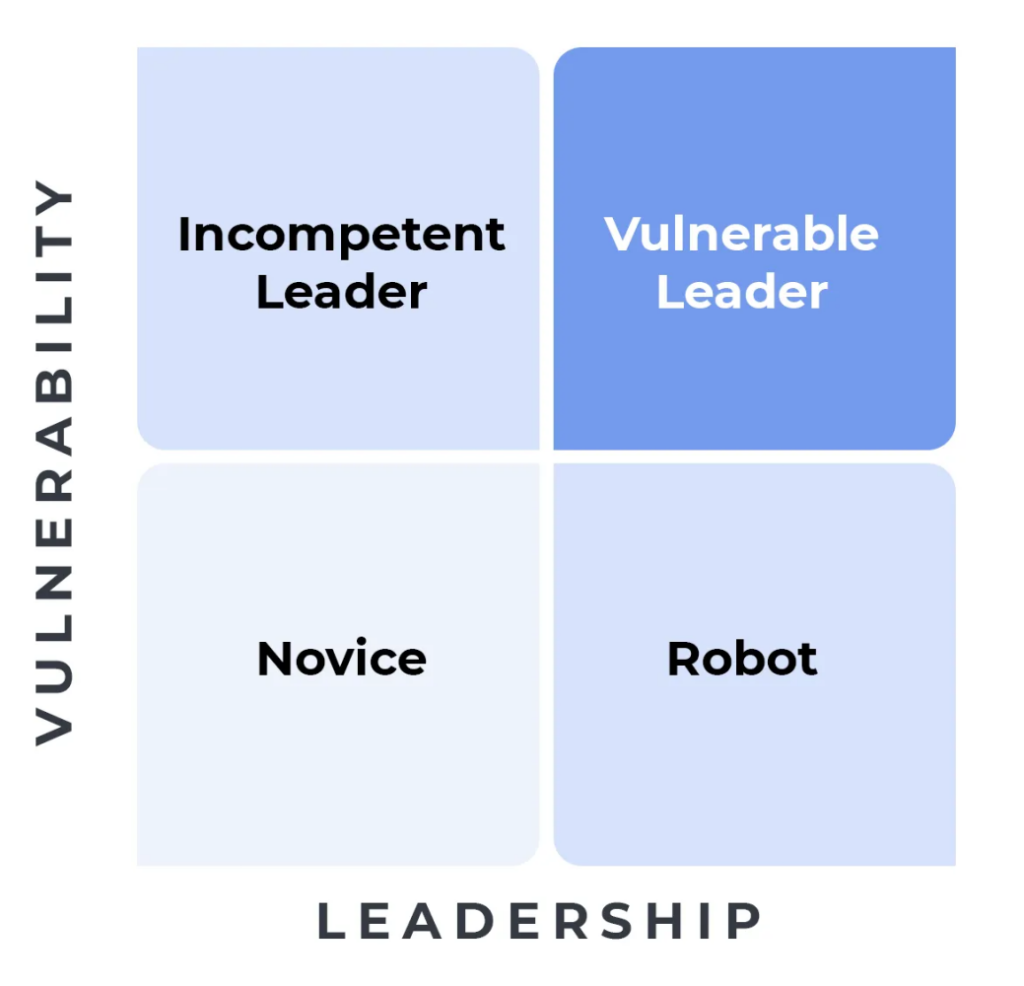This post first appeared for premium subscribers of Great Leadership on Substack and was published on October 13, 2023. If you want to get access to exclusive articles like this one and weekly 5 min leadership tips, then make sure to become a premium subscriber and get all of my best content and latest thinking delivered to your inbox. Learn more and sign up here. Premium subscribers get content like this every week.
…
If you’re a Chief Human Resources or Chief People Officer, then you can request to join a brand new community I put together called Future Of Work Leaders which focuses on the future of work and employee experience. Join leaders from Tractor Supply, Johnson & Johnson, Lego, Dow, Northrop Grumman and many others. We come together virtually each month and once a year in-person to tackle big themes that go beyond traditional HR.
As you’ve heard me say several times by now, and what I talk about in my latest book, is that you should NOT be vulnerable at work, instead you should lead with vulnerability. Being vulnerable is about exposing the gaps you have whereas leading with vulnerability is about exposing the gaps you have while demonstrating what you are trying to do to close those gaps. In a work setting, this is the difference between killing your career or transforming it for the better.
Marc Randolph, the first CEO of Netflix once told me that he achieved success by doing 10% more than what was asked but in today’s environment it feels like employees want to do 20% less than what is expected.
In that kind of an environment, simply pointing out all of the gaps you have will not help you or your team.
Bringing together leadership and vulnerability is what I call, The Vulnerable Leader Equation.
What’s the relationship between vulnerability and leadership and why do you need both?
Below you can see a quadrant with four types of leaders and as I explain each one, ask yourself what kind of leader you are and what kind of a leader you work with. Understanding this quadrant is going to make a MASSIVE difference in your career and leadership success.
Based on the model above there are four types of leaders which sit within a quadrant of vulnerability and leadership – or competence and connection. These are the two most important aspects of any great leader, being good at your job and being able to connect with the people whom you are leading.
The novice is someone who is either new in their leadership journey or someone who isn’t a leader yet. Therefore they have not yet established their leadership or vulnerability. The path they take here will determine what kind of a leader they end up as. As I discovered in my last book, The Future Leader, most people become leaders at some point in their mid 20’s yet don’t get any formal leadership training until they are in the mid to late 30’s or early 40’s. This means that they learn how to lead based on what they hear and see which in most organizations is a stereotypical management approach which is outdated. This sets up this new employees on the wrong path, and they will have a hard time leading with vulnerability. This is why it’s so crucial to give your employees leadership training early!
…
Leadership is evolving rapidly—are you keeping up? Each year, I engage with and analyze the insights of leading executives from companies like Microsoft, IBM, and Virgin Group, uncovering the strategies that drive their success. This exclusive PDF distills the top five leadership hacks used by these world-renowned leaders. Discover what sets these leaders apart and how you can apply their breakthrough tactics to elevate your leadership in 2024 and beyond.
…
The robot is someone who is effective in leadership yet struggles with vulnerability. These can be thought of as more stereotypical leaders who go to where they are by focusing more on competence instead of connection. They may be great at their jobs but they have a hard time motivating, inspiring, and engaging their people. The sense of connection is just not there. This type of leader never addresses and talks about any gaps that they might have.
I don’t make mistakes, I’m really good at what I do.
The incompetent leader is someone who is vulnerable yet struggles with leadership. They keep showing up to work pointing out their gaps without demonstrating what they are doing to close those gaps. Perhaps this leader was once quite competent but then stopped learning and growing after becoming a leader. Another possibility is that this person became a leader simply by navigating through office politics and bureaucracy. They are good at the human aspects of work but should not be in a position where they are leading others. Just because you enjoy working with someone doesn’t mean they should be leading the time you are a part of.
I’m so sorry I made a mistake.
The vulnerable leader is someone who combines the elements of vulnerability and leadership to achieve positive change and outcomes. These are the leaders who are both good at their jobs and can connect with their people on a human level. This type of a leader is not only comfortable exploring the gaps that they have but more importantly demonstrates how they are trying to close those gaps.
I’m sorry I made a mistake, here’s what I learned from the mistake I made and here are three things I’m going to do to make sure that mistake never happens again.
On top of all of this is a concept in psychology called the Pratfall effect which was developed by Elliot Aronson a psychologist who taught at the University Of California Santa Cruz (where I went to school). I interviewed him for my book and he told me that if you’re vulnerable and you are highly competent (good at your job), then your vulnerability gives you a bump in terms of your overall leadership perception because people know you’re good at your job and with your vulnerability you are now perceived as being more human and more likable.
However, if you are vulnerable and you aren’t good at your job, then your vulnerability can simply reinforce your mediocrity at work and those around you will use that vulnerability as a way to justify why you aren’t good at your job.
This is why it’s so crucial to bring together, BOTH, vulnerability AND leadership.
Understanding where you fall on this quadrant and how you can move to leading with vulnerability will allow you to lead through change, drive business performance, create trust, and unlock your potential and the potential of those around you.
Don’t be vulnerable…lead with vulnerability.
…
Leadership is evolving rapidly—are you keeping up? Each year, I engage with and analyze the insights of leading executives from companies like Microsoft, IBM, and Virgin Group, uncovering the strategies that drive their success. This exclusive PDF distills the top five leadership hacks used by these world-renowned leaders. Discover what sets these leaders apart and how you can apply their breakthrough tactics to elevate your leadership in 2024 and beyond.




